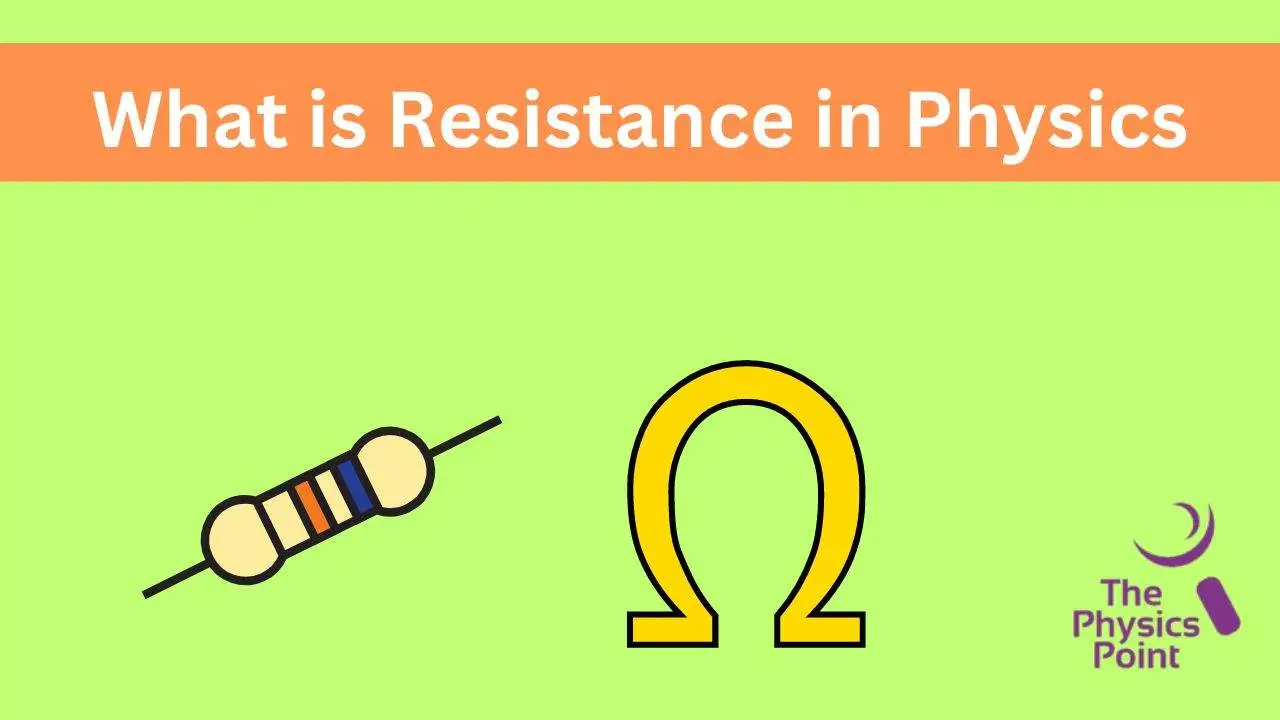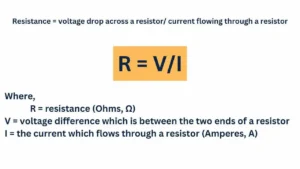What is Resistance in Physics | Definition, Formula and Unit

We hope you all are well and your exam preparation is going well. We try to teach you something new with a new topic every day. Today also we have brought a very important topic What is Resistance in Physics. In which we will give you all the information. We are going to give complete information about what is resistance in physics, its definition, formula and unit. Friends, if you want to make physics easy in your preparation, then stay with us till the end and read the article written on What is Resistance in Physics carefully.
The opposition a material provides to the flow of electrical current is known as resistance. A component has one ohm of resistance when a single ampere of electricity flows through it and there is a single volt potential difference (voltage) across it. In a direct-current (DC) electrical circuit, the current is typically inversely proportional to the resistance while the applied voltage is maintained constant. The current is cut in half if the resistance doubles, and is doubled if the resistance halved.
The majority of low-frequency alternating-current (AC) systems, including domestic utility circuits, are likewise covered by this rule. Certain components in AC circuits have the ability to store, release, dissipate, or convert energy, making the situation more complicated in some cases, especially at high frequencies. Let us now know What is Resistance in Physics. To know about this, read the article carefully till the end. So that you can understand all the information well.
What is Resistance in Physics
The quality of materials that permits the passage of electric current is referred to as resistance. The passage of stream is undoubtedly opposed by resistance. It is also symbolized by the capital letter R. The Greek uppercase letter omega Ω represents the unit of resistance, which is the ohm.
Resistance is determined by the current passing through a resistor and the voltage across it. The degree of obstruction to current passage in a specific electrical circuit is referred to as resistance. An object’s electrical resistance is the degree of resistance to the electric current flow. Electrical conductivity is the inverse quantity. The ease with which electric current flows through anything is referred to as its electrical conductivity.
| Common Symbols | R |
| SI Unit | Ω |
Resistance Formula
In the above we told you about What is Resistance in Physics. The amount of resistance an object offers to the flow of electric current is measured as its resistance. An electrical component called a resistor is utilized in circuits to supply a particular level of resistance. Resistance Formula is as follows-

What Does Resistivity Mean?
Elevated to a certain temperature, electrical resistivity, represented as ρ, is the electrical resistance provided per unit length and unit cross-sectional area. Electrical resistance is another name for specific electrical resistance. Electrical resistivity has a SI unit of Ωm. Electrical resistivity can be calculated using the formula below:
Where,
- ρ is the resistivity of the material in Ω.m
- E is the electric field in V.m-1
- J is the current density in A.m-2
Resistance And Resistivity Differ From One Another
| Parameters | Resistance | Resistivity |
| Definition | The quality of materials that permits the passage of electric current is referred to as resistance. | When opposition is expressed |
| Formula |
R = V/I
|
ρ = E/J |
| SI unit | Ω | Ω.m |
| Symbol | R | ρ |
Formula for Resistance Derivation
Ohm’s law is where the resistance formula is derived. According to this law, for some materials, the current density vector J⃗ is parallel to the electrical field E⃗ . As a result,
J⃗ = σE⃗ = 1/P E⃗ (1)
The conductivity of the material is denoted by σ = 1/p in this case. Without a doubt, this is the resistivity, or inverse of the p. From here, a material with a specific length L that incorporates two extreme scenarios in region A must be taken into consideration. A potential difference ΔV is applied in this instance. Thus, using the definition for potential difference, the following may be demonstrated:
E⃗ = ΔV/L (2)
The current that is passing through the material can be expressed as follows:
J⃗ = I/A (3)
It is now necessary to apply the solutions to equations (2) and (3) to equation (1) in order to obtain:
I/A = 1/P ΔV/L
ΔV = I pL/ A
So, when we talk of a typical relationship, ΔV = IR,
Then consequently R = pL/A
Examples of Solved Resistance Formula
In the above article, we have given you complete information about What is Resistance in Physics. Now we are telling you examples of Solved Resistance Formula.
Example 1: If 2 Ω and 5 Ω are linked in parallel, find the resistance.
Resistance
R1 = 5 Ω,
R2 = 2 Ω
The parallel resistance is articulated as
1/Rp = 1/R1 + 1/R2
RP = R1R2 / R1 + R2 =5×2/5+2 = 1.428 Ω
Example 2: A resistor in an electric circuit has a current flowing through it of 4.00 A. A voltage drop of 120 V occurs when the resistor is moved from one end to the other. Discover the significance of resistance?
Resistance Formula:
R = V/I
So, R = 120V/4A
R = 30.O Ω
Frequently Asked Question
Q? What is the formula for resistance?
Ans: The amount of opposition an object applies to the flow of electric current is called its resistance. An electrical component called a resistor is utilized in a circuit to provide a particular level of resistance. Any object’s resistance can be calculated using the following formula: R = V/I.
Q? What is meant by resistance?
Ans: The amount of obstruction to current passage in an electrical circuit is measured as resistance. Ohms, a unit of measurement for resistance, are represented by the Greek letter omega (Ω).
Q? Which four laws of resistance apply?
Ans: “The conducting material depends on its temperature,” according to the Fourth Law. This law states that the value of a metallic conductor grows as its temperature does. The resistance of a material can be expressed as R ∂ L/A, or R = ρL/A, based on the first, second, and third laws.
Conclusion
In the above article, we have provided you special information about What is Resistance in Physics. Resistance Formula, What Does Resistivity Mean? Formula for Resistance Derivation, Examples of Solved Resistance Formula, we have given you information about all these. Which can be very helpful in your exam. We hope friends, you must have liked the article written on What is Resistance in Physics. Stay connected with our website to get such important knowledge related to physics. Thank you!
